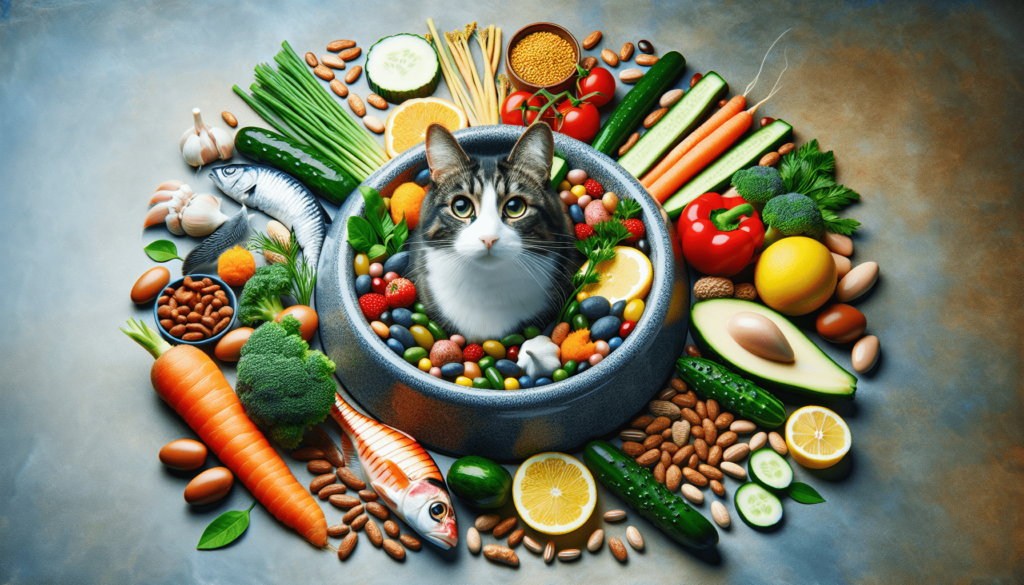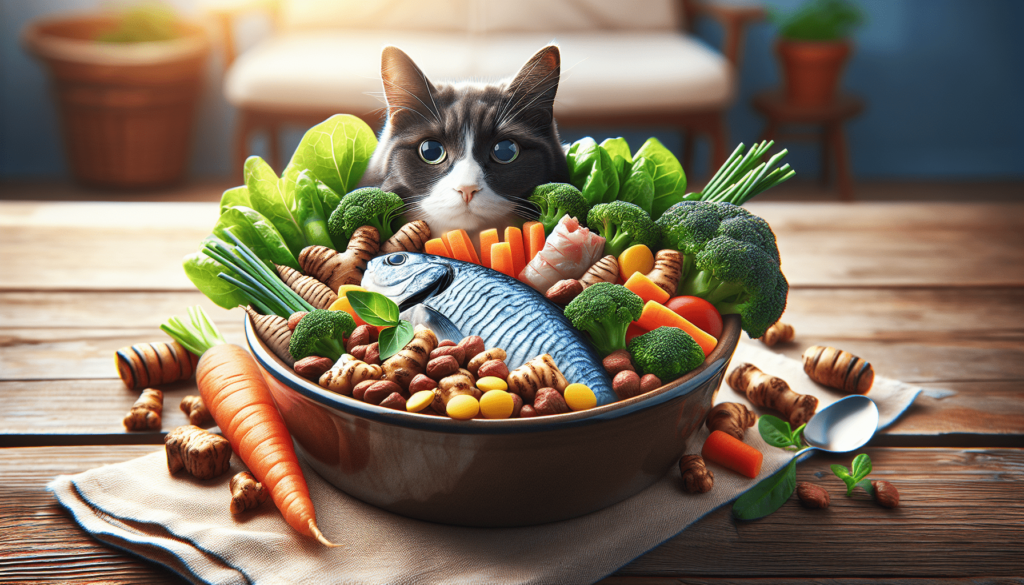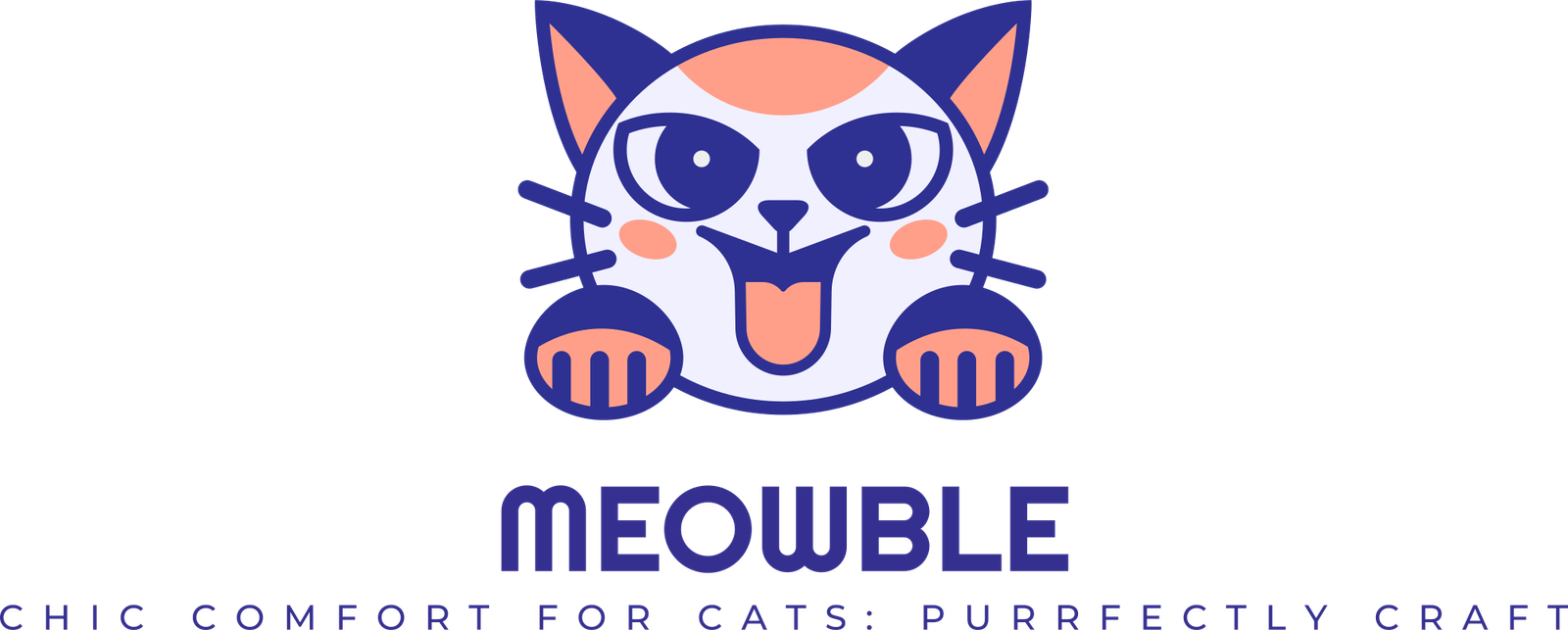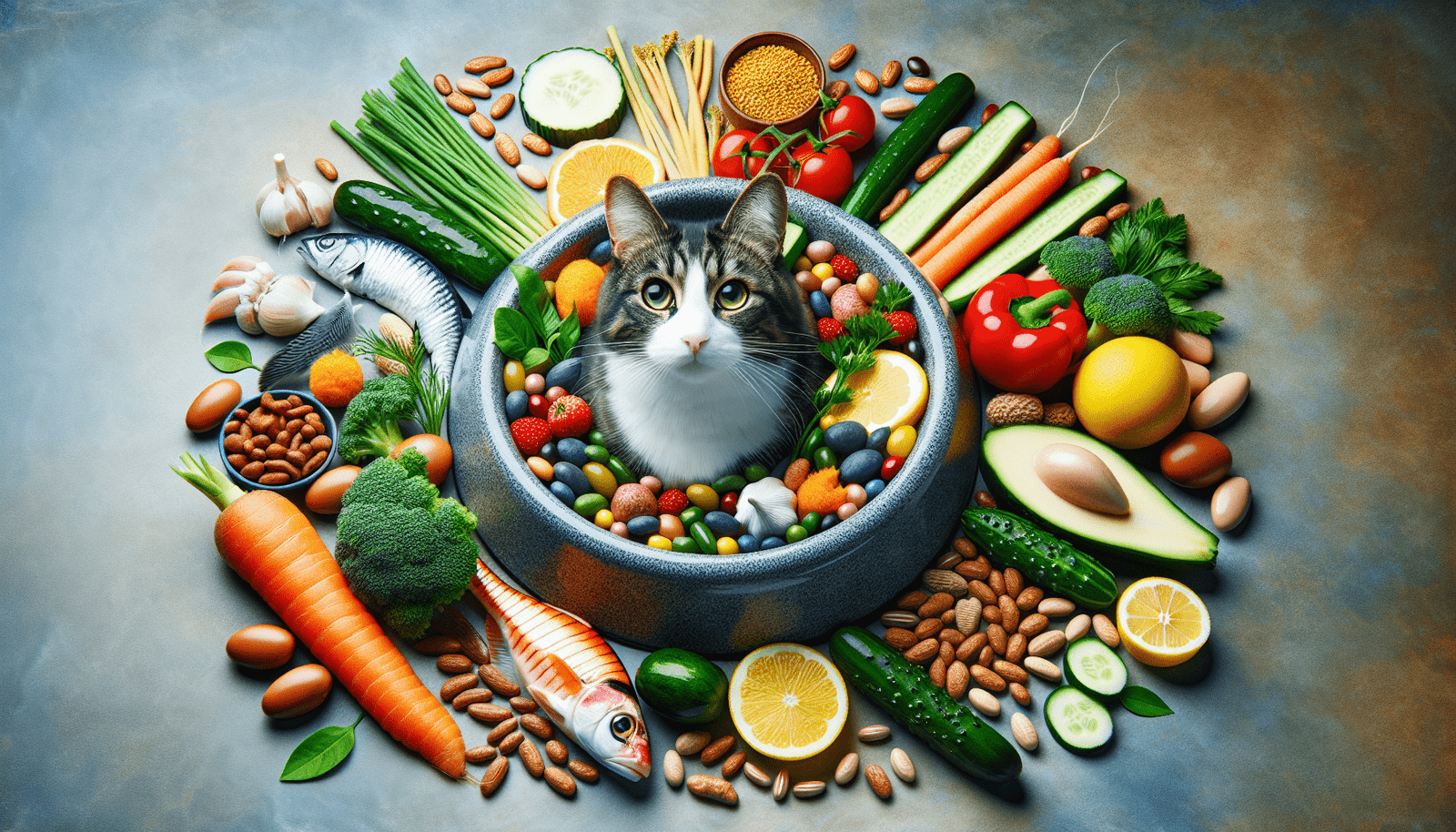Cats are fascinating creatures with unique dietary habits, but have you ever wondered what they actually eat? From the popular belief that they solely feast on fish to the intriguing delicacies they may sneakily indulge in, this article will provide an insightful glimpse into the diverse palette of our feline friends. Whether it’s their preference for high-protein meals or their occasional fascination with certain plant-based treats, you’ll discover why understanding a cat’s nutritional needs is crucial for their overall health and wellbeing. So, let’s unravel the mysteries of what lies inside their food bowls!

Cat Dietary Requirements
Cats have specific dietary requirements to maintain optimal health and well-being. As an owner, it is crucial to understand feline nutrition and provide the right balance of nutrients for your furry friend. By meeting their dietary needs, you can ensure that your cat leads a happy and healthy life.
Understanding Feline Nutrition
To provide the best diet for your cat, it is important to understand their nutritional needs. Cats are obligate carnivores, which means they require a diet rich in animal-based proteins. Unlike omnivores, cats have a limited ability to digest carbohydrates, so their diet should primarily consist of meat-based protein sources.
The Importance of Proteins
Proteins play a vital role in a cat’s diet as they provide essential amino acids necessary for growth, repair, and proper functioning of their bodily systems. Good quality protein sources, such as chicken, turkey, or fish, should be the main component of your cat’s diet. These proteins should be sourced from high-quality animal-based ingredients rather than plant-based alternatives.
Need for Fats
Fats are another essential component of a cat’s diet. They provide a concentrated form of energy and are necessary for the absorption of fat-soluble vitamins. Fats also contribute to healthy skin, a lustrous coat, and support various bodily functions. Including fat sources like fish oil or chicken fat in your cat’s diet can help maintain their overall health.
Carbohydrates in Cat’s Diet
While cats have a lower carbohydrate requirement compared to other animals, a small amount of carbohydrates can still be beneficial. However, it is important to ensure that carbohydrates come from easily digestible sources, such as rice or sweet potatoes. High-quality commercial cat foods often include a small portion of carbohydrates to provide energy and aid in digestion.
Vitamins and Minerals Essential for Cats
Vitamins and minerals are vital for your cat’s overall health and immune system. Commercial cat foods are formulated to include essential vitamins and minerals, ensuring a balanced diet. However, if you choose to prepare homemade cat food, it is crucial to consult with a veterinarian or a feline nutritionist to ensure your cat receives adequate nutrients through supplements or specific food choices.
Commercial Cat Foods
Commercial cat foods are a convenient and widely available option that provides balanced nutrition for your feline friend. They come in various forms such as dry, wet, or semi-moist cat food. Understanding the different types and their benefits can help you make an informed choice for your cat’s diet.
Dry Cat Food
Dry cat food, also known as kibble, is a popular choice among cat owners. It has a longer shelf life, is cost-effective, and promotes dental health by helping to reduce plaque and tartar buildup. However, some cats may have a preference for wet food due to its higher moisture content.
Wet Cat Food
Wet cat food, available in cans or pouches, has a higher moisture content, which helps keep your cat well-hydrated. It can be particularly beneficial for cats that have urinary tract issues or those who are not enthusiastic about drinking water. Wet food also tends to have a stronger aroma, making it more enticing for cats with a picky appetite.
Semi-Moist Cat Food
Semi-moist cat food is a middle ground between dry and wet food. It has a chewy texture, making it more palatable for some cats, while still offering convenience and a longer shelf life compared to wet food. However, it is important to note that semi-moist cat food often contains higher levels of preservatives and artificial ingredients compared to other options.
Benefits of Commercial Cat Foods
Commercial cat foods are specifically formulated to meet the nutritional needs of cats at different life stages. They undergo rigorous testing to ensure quality, safety, and consistency in their formulations. Additionally, reputable cat food brands have strict quality control measures in place, giving you peace of mind that your cat is receiving a nutritionally complete diet.
What to Look for in the Ingredient List
When selecting commercial cat food, it is important to carefully read the ingredient list. Look for high-quality animal-based protein sources like chicken, turkey, or fish listed as the primary ingredients. Avoid foods that contain excessive amounts of fillers, artificial additives, or by-products. Opting for cat foods that are free from artificial colors, flavors, and preservatives is generally considered a healthier choice.
Homemade Cat Foods
While commercial cat foods provide convenience, some owners prefer to prepare homemade meals for their feline companions. However, it is vital to be aware of the potential benefits and drawbacks of homemade cat diets.
Raw Diet for Cats
A raw diet involves feeding cats raw meat, bones, and organs similar to what they would consume in the wild. Proponents argue that this mimics their natural diet and can improve coat conditions, digestion, and overall vitality. However, it is crucial to handle raw food safely to avoid bacterial contamination and seek guidance from a veterinarian or nutritionist when formulating a raw diet.
Cooked Food for Cats
Cooked food diets involve preparing homemade meals using cooked meats, vegetables, and grains. This option provides the convenience of preparing meals in advance and allows for more control over the ingredients. However, it is essential to ensure that the diet is nutritionally balanced and meets all of your cat’s dietary requirements. Consulting with a veterinarian or a feline nutritionist can help you create a balanced cooked food diet.
Pros and Cons of Homemade Cat Diet
One advantage of homemade cat diets is that you have control over the ingredients, allowing you to tailor the diet to specific dietary needs or health conditions. Additionally, preparing meals for your cat can be a rewarding experience and strengthen the bond between you and your feline companion. However, creating a nutritionally balanced homemade diet can be challenging, and it requires careful research, recipe formulation, and possibly additional supplementation to ensure all nutrient requirements are met.
Important Ingredients for Homemade Cat Foods
If you choose to prepare homemade cat food, it is important to include high-quality animal-based protein sources, such as lean meats or fish, in the recipes. Taurine, an essential amino acid for cats, needs to be supplemented as it is susceptible to degradation during the cooking process. It is also crucial to incorporate a variety of vitamins and minerals through supplementation to avoid nutrient deficiencies.
Feeding Kittens
Proper nutrition is crucial for the healthy growth and development of kittens. As they transition from mother’s milk to solid foods, it is important to provide them with the appropriate diet for their age and nutritional needs.
Mother’s Milk and Kitten Diet
During their first few weeks of life, kittens rely exclusively on their mother’s milk for nutrition. Mother’s milk provides essential antibodies and nutrients necessary for their growth and development. It is vital not to separate kittens from their mother until they are at least eight weeks old to ensure they receive an adequate amount of mother’s milk.
Transitioning from Milk to Solid Foods
Around the age of four to five weeks, kittens can begin the gradual transition from mother’s milk to solid foods. You can introduce kitten-specific wet food or a mixture of wet food and kitten formula to ease the transition. It is important to offer a variety of textures and flavors to encourage acceptance and ensure a balanced diet.
What to Feed Kittens
Kittens require a diet that is higher in calories, proteins, and fats compared to adult cats. Look for commercially available kitten-specific formulas that meet the nutritional requirements for their growth. Nutrient-dense foods, such as those labeled for “kittens” or “growth,” provide the essential nutrients necessary for their development.
How Often to Feed Kittens
Kittens have smaller stomachs and faster metabolisms, which require more frequent feeding compared to adult cats. It is recommended to feed them small meals spaced throughout the day. Generally, kittens should be fed four to six times a day until they are around six months old. Gradually reducing the frequency as they grow older and their digestive system matures is advisable.

Feeding Adult Cats
Once your cat reaches adulthood, their dietary needs change. Providing a balanced and appropriate diet is essential for maintaining their overall health and well-being.
Maintaining Balanced Diet
Adult cats benefit from a balanced diet that includes high-quality animal-based proteins, moderate levels of fats, and a small amount of carbohydrates. Commercial adult cat foods are formulated to meet these requirements and are available in formulations specific to various life stages, activity levels, or specific health conditions.
Monitoring Cat’s Weight
Obesity is a common issue among adult cats, and it can lead to serious health problems. Regular monitoring of your cat’s weight is important to ensure they maintain a healthy body condition. If your cat is gaining or losing weight unexpectedly, consult a veterinarian to adjust their diet or assess for any underlying health issues.
Avoiding Human Foods
While it may be tempting to share your meals with your cat, it is important to avoid feeding them human foods. Many common human foods, such as onions, garlic, chocolate, and caffeine, can be toxic to cats. Cats also have different nutritional requirements compared to humans, so it is best to stick to a commercially balanced cat diet or consult with a veterinarian for specific recommendations.
Portion Sizes for Adult Cats
Proper portion control is important to prevent overeating and maintain a healthy weight in adult cats. The portion size will depend on your cat’s age, lifestyle, and overall health. Commercial cat food packaging typically provides feeding guidelines based on weight and activity levels. It is important to follow these guidelines and monitor your cat’s body condition to adjust the portion sizes accordingly.
Feeding Senior Cats
As cats age, their nutritional requirements change due to factors such as a slowing metabolism and potential health conditions. Understanding their special dietary needs can help ensure their golden years are filled with optimal health and happiness.
Special Dietary Needs of Older Cats
Senior cats often have a decreased ability to absorb nutrients and may suffer from age-related conditions such as arthritis or kidney disease. It is important to choose a diet specifically formulated for senior cats, which typically contains lower levels of protein, controlled levels of phosphorus, and added joint-supporting ingredients.
Feeding Frequency for Senior Cats
While the specific feeding frequency may vary depending on the individual cat, senior cats generally benefit from multiple small meals throughout the day. This helps accommodate their decreased appetite and aids in digestion. Providing a consistent feeding routine can also help senior cats maintain a healthy weight and prevent obesity.
Adjusting Diet for Health Conditions
Senior cats may develop various health conditions as they age. It is important to work closely with your veterinarian to address any specific dietary needs your cat may have. For example, cats with kidney disease may require a special diet with controlled levels of protein and phosphorus to support kidney function.
Obesity and Overfeeding in Cats
Obesity is a common issue among cats, and it can lead to a range of health problems, including diabetes, joint issues, and reduced lifespan. Recognizing the signs of overweight or obese cats, implementing dietary changes, and preventing overfeeding are crucial for their well-being.
Recognizing Overweight and Obesity in Cats
To determine if your cat is overweight or obese, it is important to monitor their body condition score. You should be able to easily feel your cat’s ribs without excessive fat covering. An overweight or obese cat may have difficulty grooming, decreased mobility, or a visibly sagging abdomen. If you suspect your cat is overweight or obese, consult with a veterinarian for appropriate dietary and lifestyle changes.
Treating Cat Obesity through Dietary Changes
To help your cat shed excess weight, dietary changes are often necessary. Your veterinarian may recommend a prescription weight loss diet or provide guidelines for portion control and choosing low-calorie cat foods. It is important to follow their recommendations and monitor your cat’s progress to ensure safe and gradual weight loss.
Preventing Overfeeding
Preventing overfeeding is essential to maintain a healthy weight in cats. It is important to measure their food accurately and avoid leaving food out throughout the day. Feeding interactive meals or using puzzle feeders can help slow down eating, engage their natural hunting instincts, and prevent overconsumption. Regular exercise through playtime can also help keep your cat physically active and mentally stimulated.
Deficiency and Excess in Cat’s Diet
Imbalances in a cat’s diet can lead to nutritional deficiencies or excesses, both of which can have negative health effects. Understanding the signs of nutritional imbalances and taking appropriate measures is essential for your cat’s well-being.
Signs of Nutritional Deficiencies or Excess
Common signs of nutritional deficiencies in cats include poor coat condition, weight loss, decreased appetite, diarrhea, or an overall decline in health. On the other hand, excesses in certain nutrients, such as excessive vitamin D or calcium, can lead to toxicity symptoms like vomiting, weakness, or kidney damage. Regular veterinary check-ups can help identify any potential imbalances and address them promptly.
Effects of Imbalanced Diet
An imbalanced diet can have detrimental effects on your cat’s health. Nutritional deficiencies can weaken their immune system, impair growth, and lead to various health conditions. Excesses in certain nutrients can also cause severe health problems. It is important to provide a nutritionally balanced diet that meets all of your cat’s specific needs to prevent these imbalances.
Coping with Nutritional Disorders in Cats
If you suspect your cat has a nutritional disorder, it is crucial to consult with a veterinarian. They can perform diagnostic tests to determine any deficiencies or excesses and recommend appropriate dietary changes or supplements. It is important to follow their guidance to ensure your cat receives proper nutrition and support during their recovery.
Common Foods That Are Toxic for Cats
Some foods that are safe for humans can be toxic to cats. It is important to be aware of these foods and keep them out of your cat’s reach to prevent potential health emergencies.
Alcoholic Beverages
Alcoholic beverages should never be given to cats. Even small amounts of alcohol can cause intoxication, leading to symptoms like vomiting, disorientation, seizures, or even coma. Additionally, the metabolism of alcohol in cats is slower, making it more dangerous for them.
Caffeine and Chocolate
Caffeine and its related compound, theobromine, are toxic to cats. Chocolate and caffeinated beverages can cause symptoms such as increased heart rate, tremors, restlessness, and even life-threatening conditions like seizures or heart arrhythmias. It is important to keep all caffeinated products and chocolate securely stored away from your cat.
Onions and Garlic
Onions and garlic, whether raw, cooked, powdered, or dehydrated, contain compounds that can damage the red blood cells in cats. Ingesting even small amounts can lead to anemia and may require immediate veterinary intervention. It is important to avoid feeding your cat any food containing onions or garlic.
Other Foods Harmful for Cats
Some other common foods that can be toxic for cats include grapes and raisins, which can cause kidney failure; certain nuts like macadamia nuts, which can cause muscle weakness and neurological symptoms; and certain artificial sweeteners like xylitol, which can cause life-threatening drops in blood sugar levels. It is crucial to be vigilant and avoid feeding any potentially harmful foods to your cat.
Hydration and Cats
Proper hydration is essential for your cat’s overall health and well-being. Encouraging adequate water intake and recognizing the signs of dehydration are important for maintaining your cat’s hydration levels.
Water Requirement for Cats
Cats have a low thirst drive, and they often rely on their food to meet their hydration needs. However, it is still crucial to provide fresh, clean water at all times to encourage them to drink. Cats typically require about 60-80 milliliters of water per kilogram of body weight per day.
Encouraging Cats to Drink More Water
There are several ways to encourage your cat to drink more water. Some cats prefer running water, so providing a cat water fountain may entice them to drink more. Placing multiple water bowls in different areas of the house can also encourage them to drink. You can also consider adding wet food or adding a small amount of water to their dry food to increase their overall water intake.
Signs of Dehydration in Cats
It is important to be aware of the signs of dehydration in cats, as it can be a serious health issue. Common signs of dehydration include increased thirst, dry or sticky gums, loss of skin elasticity, sunken eyes, lethargy, and decreased appetite. If you suspect your cat is dehydrated, it is important to consult with a veterinarian for further evaluation and appropriate treatment.
By understanding and meeting your cat’s dietary requirements, you can ensure they receive the nutrition they need to thrive. Whether you choose commercial cat foods or prefer to prepare homemade meals, it is important to prioritize their health and well-being through a balanced and appropriate diet. Regular veterinary check-ups and consultations with a feline nutritionist can help guide you in providing the best diet for your beloved feline companion.

